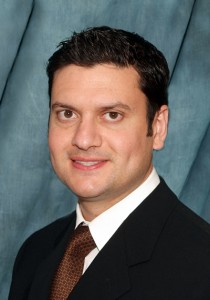
Message from your doctor…
Whether you or one of your family members or friends is considering biceps tenodesis, or are scheduled for surgery, I understand this can be a stressful time. You may have forgotten some of the information we discussed during our last visit, or forgot to ask me a specific question about what to expect. This site is designed to help us stay connected, and to answer some of the most common questions patients ask me about shoulder biceps tenodesis.
I want to make sure that both you and your family members have timely information at your fingertips during the days, weeks, and months following your surgery…so you can get back to enjoying the activities you love.
HELPFUL VIDEO
MOST COMMON QUESTIONS
Proximal Biceps Tenodesis
How should I be using my sling?
The sling should be worn at all times when you are up and walking around. While you are sitting/resting, you may remove the sling occasionally as long as your upper arm/shoulder stays near your body. Typically the sling will be worn for 3 weeks total for an isolated biceps tenodesis. However, the use of the sling may be individualized based on your surgery. Some patients will wear the sling for up to 6 weeks to protect other combined surgical repairs.
If you have an “arc” sling (with waist portion): The waist strap should be on when you are up walking. Wearing the waist strap to sleep is optional. The purpose of the waist strap with the small bar that extends is to hold the shoulder in a slightly “abducted” position, which allows for less tension on the rotator cuff and labrum during the healing process.
What motions should I avoid/what motions are safe?
You may gently bend your elbow, keeping your upper arm near the body. You should avoid fully extending (straightening) your elbow until your surgeon and physical therapist progress you to this point. Fully straightening the elbow too soon will pull on the surgical repair of the biceps and could cause damage to the repair. Do not lift shoulder out in front of body, out to your side, or reach behind your back until your physical therapist has progressed you to that point in therapy. It is ok to use your hand to do things like typing (as long as your shoulder stays near your body). For example, you should put a computer keyboard in your lap instead of reaching out on a table for your keyboard).
Initially in therapy, your therapist will do “passive motions,” which means your muscles won’t be doing the work. This protects your bicep repair and allows your body to heal.
When can I drive?
Please do not attempt driving for about 4 weeks after surgery. This is for your safety, as well as other drivers- please do not attempt to drive with only one hand. Reasons for no driving post operatively: A quick, reactive motion of the shoulder while driving could damage your surgical repair. Secondly, you should not drive while taking any narcotic pain medications.
How should I be sleeping?
Please try to wear the sling while you are sleeping for 4 weeks after surgery- this provides good support to the shoulder. If you have an “arc” sling (which has a waist strap portion), you do NOT need to sleep with the waist strap attached. You may remove the sling to sleep if you are too uncomfortable, but try to keep your shoulder near your body (placing pillows around and behind the shoulder may help). Some people find it more comfortable to sleep upright (in a recliner chair) for a few days to weeks after surgery- this is optional.
SPORTS SPECIFICS
We know you are eager to return to your sports and hobbies. We want to guide you safely through that process. Please use the following as a guide.
GOLF
6 weeks post-op: Putting
3 months post-op: Chipping, pitching, and half-swings with your short irons
4-5 months post-op: Full but gentle swings with irons
6 months post-op: Full play with no restrictions
BASKETBALL
3 months post-op: jogging, light dribbling drills
4-5 months post-op: Free-throws, passing drills, “shooting around,” but no contact
6 months post-op: No restrictions
FOOTBALL
3 months post-op: Jogging and light throwing drills
4-5 months post-op: Agility/plyometric training with the guidance of a professional
6 months post-op: No restrictions
BASEBALL/SOFTBALL
3 months post-op: Jogging and light throwing drills (with guidance of physical therapist)
4-5 months post-op: Throwing/batting drills
6 months post-op: No restrictions
WEIGHT LIFTING
Please follow the instructions of your physical therapist. Once you are nearing the end of physical therapy (typically 3 months post-op), your therapist can create a safe “return-to-lifting” program. Physical Therapists and Athletic Trainers can outline a specific plan for you.



